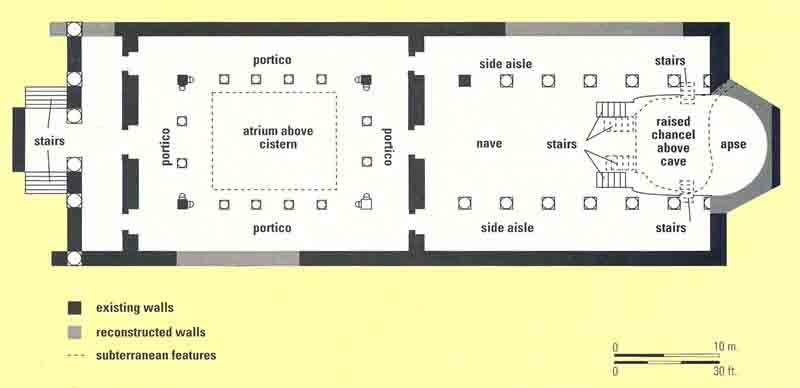Image Details

After L. H. Vincent and F. M. Abel
This church represents an architectural revolution. Although Bishop Paulinus built the Holy Land’s first basilica-style church in about 314 in Tyre (in modern Lebanon), it was Constantine who promoted their construction in the third and fourth decades of the fourth century. Constantine sponsored the construction of the first four basilica churches in Palestine, including the Eleona Church on Jerusalem’s Mount of Olives, built over a cave where Jesus is supposed to have sat with his disciples. Basilica churches were characterized by an apse and a long prayer hall, which had two or four longitudinal rows of columns that created a nave and two or four aisles. Dashed lines mark the subterranean features; a cistern below the atrium and stairs leading to a crypt below the chancel. Such crypts, a common feature of Byzantine basilica churches, often held, or claimed to hold, the reamins of early Christian martyrs.
The Romans’ multipurpose civic basilica, often used for orations or for adjudication of disputes, served as the model for the basilica church. Typically the Roman basilica held a statue of a god or of the emperor in the apse. The spacious and public character of the civic basilica suited Christian needs for a large space for public worship. Christians modified the civic basilica by elongating the building and deepening the apse, thus drawing the worshipers inward and directing their eyes toward the apse and the altar.
